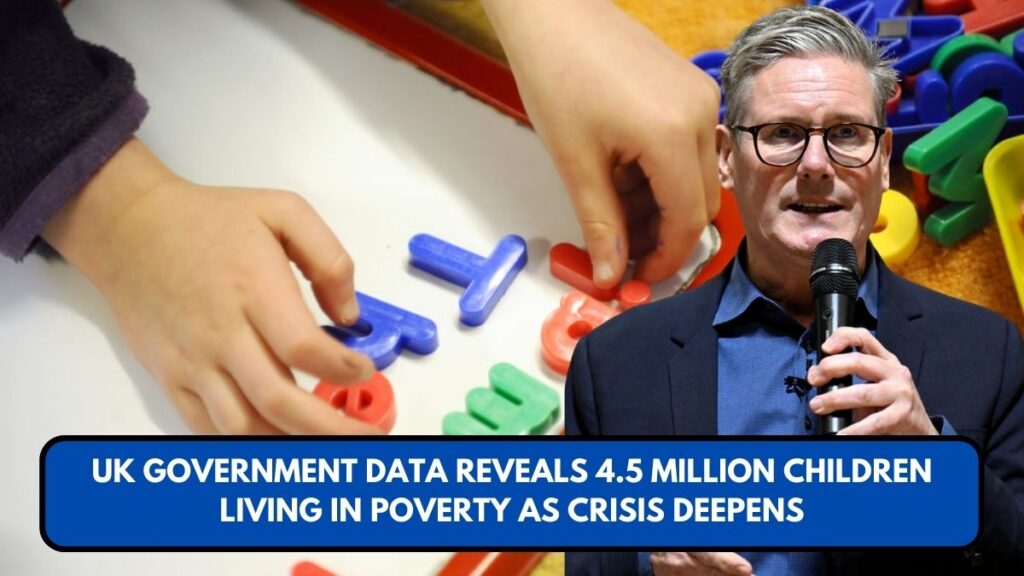The latest government figures reveal a record-high number of children living in poverty in the UK, with an estimated 4.5 million children now affected. This marks an increase of 100,000 from the previous year, meaning 31% of all children in the country are growing up in financial hardship.
The Causes Behind the Surge in Child Poverty
Several key factors have contributed to this alarming rise in child poverty:
- Welfare Cuts: Recent reductions in government support have made it harder for low-income families to cope with rising costs. The government’s own estimates suggest that recent benefit cuts could push 250,000 more people—including 50,000 children—into poverty by the end of the decade.
- Working Poverty: Despite being employed, many families are still struggling. 72% of children in poverty come from households where at least one parent works, highlighting the growing issue of in-work poverty.
- Disability and Larger Families: 44% of children in poverty live in families with a disabled member, while families with three or more children have a poverty rate of 44%.
- Ethnic Disparities: The crisis disproportionately affects ethnic minority families, with 49% of children from Black and Asian backgrounds experiencing poverty, compared to 24% of white children.
- Rising Cost of Living: With inflation still high, families are struggling to afford essentials like food, rent, and energy bills.

Regional Disparities in Child Poverty
Some regions of the UK are worse affected than others. The West Midlands and London have the highest child poverty rates, at 36% and 35%, respectively. These areas have also been among the hardest hit by welfare reforms and rising housing costs.
Public Reaction and Charitable Concerns
The latest figures have sparked outrage among charities, campaigners, and opposition politicians.
- Save the Children described the situation as a “national shame”, stating that government policies have directly contributed to these rising numbers.
- The Joseph Rowntree Foundation called on the government to take urgent action to restore welfare support and increase child benefits.
- Food banks across the country are reporting record demand, with more families than ever needing emergency support.
Government Response
The government has defended its approach, claiming that recent economic challenges have made difficult decisions necessary.
- The Department for Work and Pensions (DWP) stated that welfare reforms were designed to encourage work and economic independence. However, critics argue that many low-income families remain trapped in poverty despite being employed.
- The Labour Party has vowed to tackle child poverty if elected, promising an overhaul of the Universal Credit system and increased support for struggling families.
What Can Be Done?
Experts and campaigners have outlined several key measures to address child poverty:
- Increase Universal Credit and Child Benefit Payments – Raising benefits in line with inflation could help struggling families keep up with rising costs.
- Improve Wages for Low-Paid Workers – Ensuring that wages keep pace with the cost of living would help reduce in-work poverty.
- Expand Free School Meals – Making school meals available to more children would provide a safety net for low-income families.
- Invest in Affordable Housing – High housing costs are a major factor in child poverty, particularly in London and other urban areas.

Conclusion
The UK is facing a child poverty crisis, with millions of children growing up without basic necessities. While economic challenges have played a role, government policies on welfare, wages, and cost-of-living support are key factors in determining how families cope. As pressure mounts on ministers to act, the need for urgent reform has never been clearer.
For families struggling with poverty, support and advice can be found at:
This article has been carefully fact-checked by our editorial team to ensure accuracy and eliminate any misleading information. We are committed to maintaining the highest standards of integrity in our content.

Himanshu Sharma writes for Weekend Spy, focusing on recruitment, government schemes, and current affairs. He is dedicated to making complex information accessible to readers.
Himanshu enjoys playing chess, hiking, and trying new recipes, always seeking ways to combine his love for writing with his passion for exploration. Connect with Drop him an email at [email protected].







